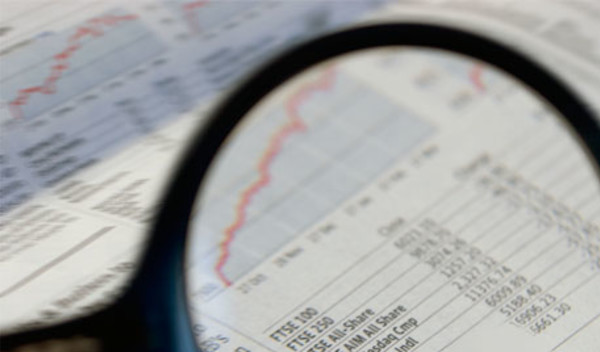

He has a typically straight-forward view on equity valuation, with his favourite metric being the total market capitalisation of all US stocks relative to the economy’s GDP output. He once described this as “the best single measure of where valuations stand at any given moment”. He also observed that when the metric exceeds certain levels, it is a bit like playing with fire.
In the same way that a country’s debt to GDP ratio is said to have become unsustainable once it reaches 100 per cent, this is the level at which the ‘Buffett metric’ indicates that some caution is warranted.
With the indicator now rapidly approaching its 2000 peak of 145 per cent, investors may be asking themselves if it is time to run for cover.
In the prevailing environment, investors are being forced to juggle with a fairly unique set of circumstances. If equity valuations are stretched, the same can certainly be said of bond markets, with the longest bull market in living memory driving yields to unprecedented lows. This raises the spectre of duration – which expresses the vulnerability of an individual security or bond portfolio to a rise in interest rates – especially with scant rewards on offer for locking-in to a fixed rate for a longer period.
Absorbing duration risk
The spread between two- and 10-year US Treasury yields has recently narrowed to just 60 basis points, meaning an investor would have to be very confident that we are near the peak of the Federal Reserve’s current rate-hiking cycle before absorbing the duration risk associated with a 10-year security.
As such, since the global financial crisis (GFC), the so-called quest for yield has typically involved the absorption of greater credit risk by descending down the quality spectrum. This, in turn, increases the possibility of being exposed to defaults.
The potential rewards for absorbing such risks are again scant, with credit spreads markedly tighter than in early 2016 when the energy industry was experiencing its weakest moment.
Similarly, while many ‘safe’ government bonds are offering negative real yields, investors holding cash are being penalised to an even greater extent. In fact, one of the reasons cited for the extended rally in risk assets is the lack of a cash-related opportunity cost.
Key points
- The Buffett Metric says if a country’s debt hits 100 per cent of GDP, it’s time to run for cover.
- Active managers outperform during downturns.
- ‘Buy and hold’ investors should consider having an active leaning in their equity portfolios.
Ironically, one place where equity investors could potentially hide from excessive valuations is in an actively managed equity fund.
Since the turn of the millennium, and especially post the GFC, we have seen unprecedented flows into passive or index-tracker funds.
The issue with the proliferation of such strategies, and a corresponding reduction in the proportion of capital that is actively managed, is that all other things being equal, overvalued stocks become increasingly expensive, while undervalued stocks get progressively cheaper – driven as passive strategies are by money flows.
Calling the market
The real problem is that we have no historical precedent to measure the implications of the potentially sudden and huge outflows from passive funds that are likely to be triggered by any abrupt downturn in equity markets.
That is not to say that an equity market crash is imminent. Asset managers have learnt to their own detriment that attempts to time the market are frequently futile, with the prediction of highs and lows proving a very inexact science – even with the Buffett metric as a guide.
Indeed, any investor choosing to dispose of their equity holdings in 2012, when the ratio hit 100 per cent, would have missed out on five years of solid gains and a bumper 2017. Furthermore, almost nine years into the current bull market, robust corporate earnings and solid economic momentum constitute compelling reasons for holding on to equities, rather than hiding from them.
In addition, the fear of missing out on a further melt-up in equity prices can exert an overwhelming psychological influence.
So how can investors balance such considerations?
Although ‘buying the market’ has unquestionably proved a lucrative decision in the post-GFC years, this has not always been the case. In fact, historically speaking, the passive versus active dynamic has had a decidedly cyclical feel to it.
According to the data, there is a tendency for active managers to outperform during downturns (2000-02 and 2007-09). This partly reflects the typical case that markets tend to be more fundamentally driven when the emphasis is on capital preservation. What is not quite so obvious, however, is that active managers also tend to outperform during the infancy of bull markets (1982-85, 2003-05 and 2009-11).
Passive underperformance
The obvious inference we can draw from this is that market momentum, driven by passive inflows, tends to only kick in once a bull market becomes established, while we typically see accelerated outflows and relative underperformance from passive strategies when the tide turns.
Consequently, while we could point to a number of reasons for staying invested in equities, the cyclical interaction between passive and active fund outperformance firmly suggests that the sun is about to set on the former, as we move towards a new dawn for active management.
‘Buy-and-hold’ investors should therefore consider implementing an active tilt to their equity portfolios. However, it is important to choose a manager that seeks to create value for investors through material benchmark differentiation, rather than those who are effectively ‘closet indexers’.
Matt Beesley is head of equities at GAM



